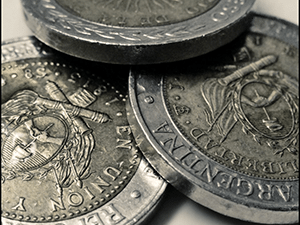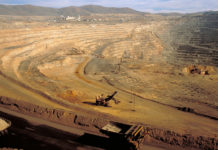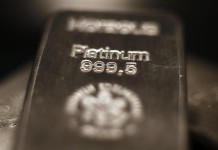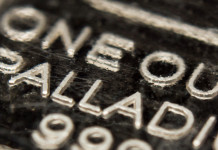
[miningmx.com] – TRYING to understand just how much platinum metal sits in investor hoards or mining company inventories is something of a dark art. GFMS Thomson Reuters, a UK-based market consultancy, estimated in 2012 platinum stocks at 4.5 million ounces.
The thinking is that there’s been drawn-down on those stocks, but the market is not sufficiently relieved. It also supposes 900,000 of platinum ounces held in Absa Capital’s exchange traded fund (ETF) is not actually an inventory.
Derek Engelbrecht, the outgoing marketing director of Impala Platinum (Implats), says these ounces are unlikely to be liquidated, although the track-record of ETFs shows they can be counted as “hot money’; in other words, investors will sell the metal – release it into the market – when there’s a profit to realise.
In any event, the inventories of platinum which have been amassed over the years is dampening the “fundamental deficit’ in the platinum market. Platinum producers aren’t mining enough metal to meet market demand such as autocatalysis.
That’s why Engelbrecht is hoping the South African Reserve Bank (Sarb) accept his idea for a Mandela platinum coin. “It’s early days yet, but we hope to get a meeting with Gill Marcus, Sarb governor, and ask if we’re barking up the right tree,’ says Engelbrecht.
Apart from creating a new market for platinum mined in South Africa, the coin would also be locally manufactured and therefore become a beneficiation project. A small premium could also be charged with the proceeds going to one of the Mandela charities such as the Mandela Childrens’ Fund, or the like.
A burning irony for Engelbrecht has been the fact that Implats, with the Platinum Guild, helped establish the Platinum Eagle, a coin which is minted and sold in the US. “The coin is now in its fifth iteration. Why on earth are we allowing this to happen in the US,’ says Engelbrecht.
Red tape abounds, however. By way of example, owning unwrought gold in South Africa such as a gold bar, illegal in terms of the country’s Precious Metals Act. Owning coins is permissable, hence the existence of Krugerrands, but it’s a difficult process.
Says Engelbrecht: “I think that will be a lot of government bureaucracy, but I will endure. I will be knocking on doors to try and get this off the ground’.
The other avenue for alternative platinum demand is the metal’s use in the manufacture of fuel cells. The potential of platinum in carbon-free engines has been talked about for the best of 20 years – without industrial scale production ever taking place. That may change.
Hyundai and Toyota are due to launch fuel-cell powered cars in months, a fact to which Ivanhoe Mines president, Robert Friedland referred late last year when he said they would be “driving down Main Street in a city near you’.
A major development has been to lower the amount of platinum needed per engine, thus lowering the cost to consumer. It’s now 50 grammes per cell versus 100g a decade ago. And the fuel cell’s major rival, battery technology, is not as consumer friendly with its significant recharge times which auto-manufacturers say make it less attractive to drivers.
There’s also been an uptick in the use of stationary fuel cells. More units are going into Japan following the nuclear disaster at Fukushima Daiichi in 2011. “That could be the tipping point in driving the technology and it ultimately getting into vehicles,’ says Terence Goodlace, CEO of Implats.











